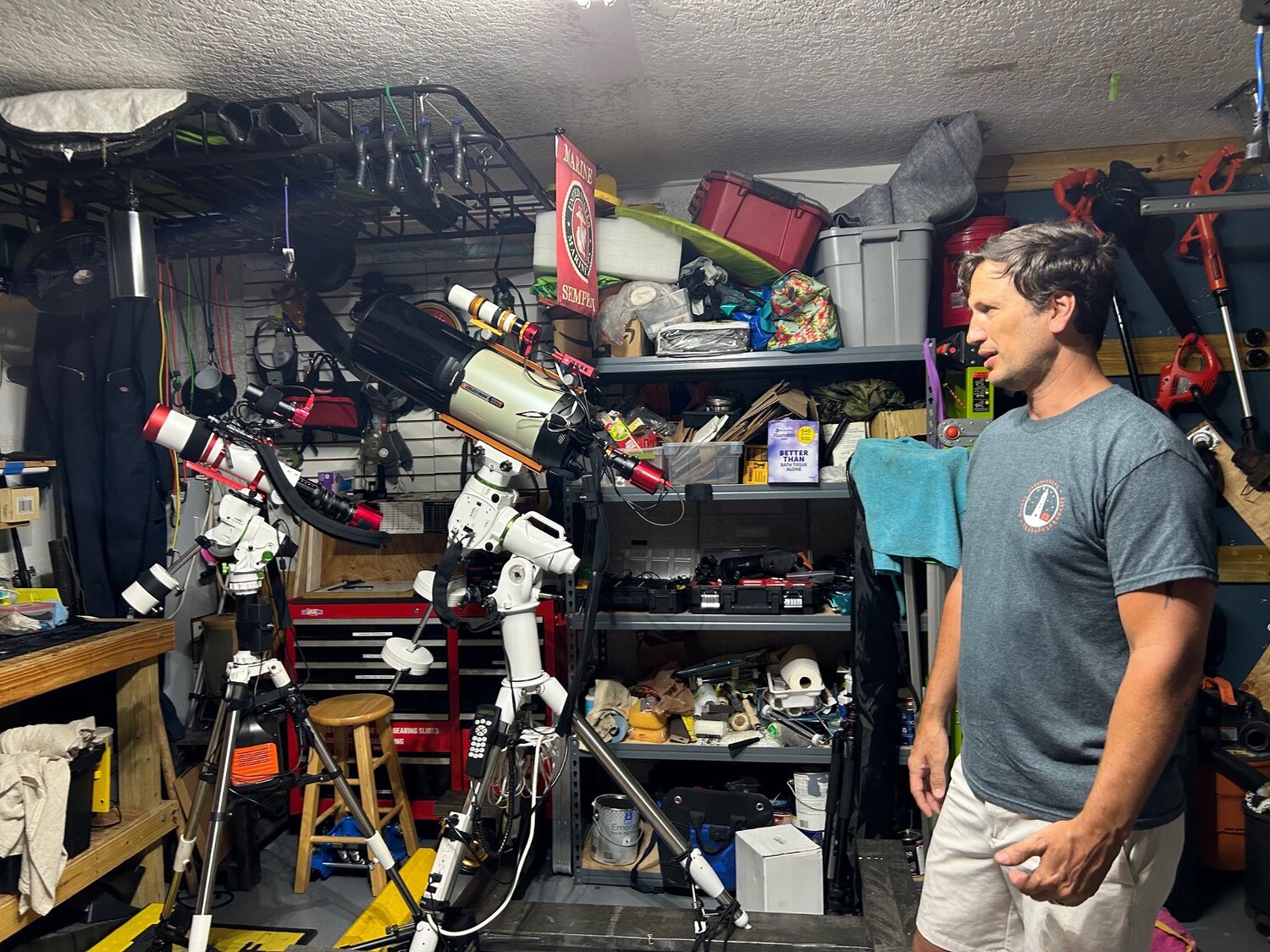Carefully Capturing the Stars from a Local Driveway
At an unassuming house in a local subdivision, a former peacetime Marine Corps infantryman positions his two telescopes on the driveway and executes his meticulously prepared approach, saying, “The amount of planning for these shots is almost as exciting as the chase.”
Asked which came first, his love of astronomy or photography, Ryan Haley says he’s been interested in astronomy since he was a kid. It was when he met his wife, Julie, years later and borrowed her Canon camera, “I just got this weird idea. I didn't even know astrophotography was a thing. Taking pictures of the stars or galaxies was kind of my main interest.”
Delving into books on the subject, Ryan found Astro BackYard, a website by an astrophotographer who posts recommendations, gear reviews, and tips on acquiring telescopic equipment on a budget. Haley got a telescope and a guide scope and connected them to the borrowed Canon T6, with “a very basic mount that just tracked the sky.”
Continuing to hone his skills, he got a German equatorial mount that he manually aligns to the North Star, called polar alignment, and then the telescope points directly to the target. While the earth rotates, Ryan explains, “The mount tracks those targets in the sky, which is important because if you're going to take a five-minute exposure, you need everything to be crisp. If your guiding isn't correct, you'll have star trails.”
Since starting this hobby four years ago, the technology has advanced. Haley now has two mounts and two telescopes, using the smaller telescope for wide angles and bigger targets. The larger one is for faraway and small objects. Each has a dedicated astronomy camera and a computer. “These are small Raspberry Pis, and they have software designed to operate the cameras, the mounts, everything … I get everything set up, and then I'm just basically sitting around,” until the imaging is complete, “and then when it's time to pack it up,” Ryan says, “I just roll the telescopes in” to collect the information.
Processing the collected data involves taking “105-minute exposures, stacking them in software and then after stacking everything, you have more processing to do, like removing light pollution” also with software.
Before being able to ‘just sit around,’ a lot of planning, sometimes weeks, takes place. The time of year when the target is going to be highest in the sky is ideal because, as Haley explains, that's where there is the least amount of light pollution. There are also seasons to consider. Galaxy season, says Haley, is when the Milky Way band is at the horizon. “There are no nebulas in the sky. There's a few, but they're dim and there's not a lot going on” for about five months. And then seeing the Milky Way band, “which is starting to come up now,” signals the arrival of Nebula season.
This business intelligence developer pursues a rather solitary passion, but Haley enjoys sharing what he knows. When asked to give an astronomy presentation to his 8-year-old twins’ second-grade class, Haley prepared an interactive presentation, encouraging the kids to ask questions “while I was giving the talk, to make sure they weren’t falling asleep,” he said. “And it went really well.”
As the long-term planning and tracking targets for the next shoot nears completion, Ryan Haley starts taking current conditions into consideration: moon phases, clouds and other variables. “When I finally get that clear night, no clouds, and the moon’s not there, it’s a huge joy!”
Check out the Pirate Observatory Facebook page (also on Instagram), where Haley shares his awe-inspiring images of the cosmos and gives detailed explanations of the process for each.






